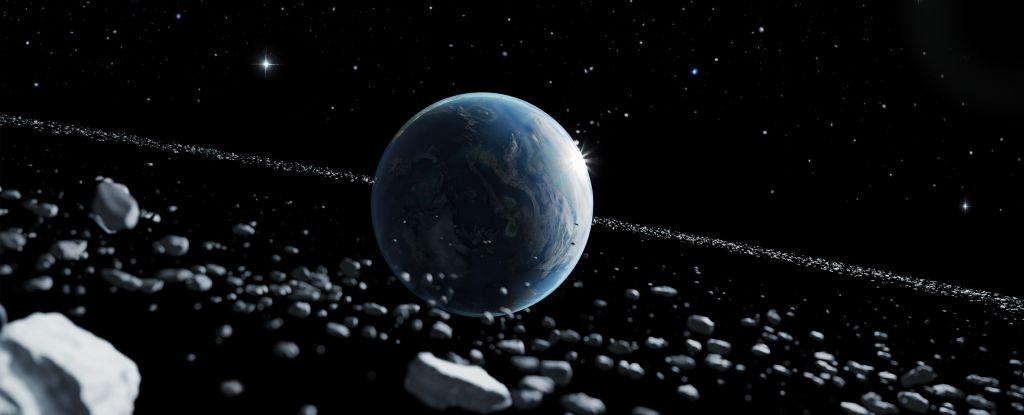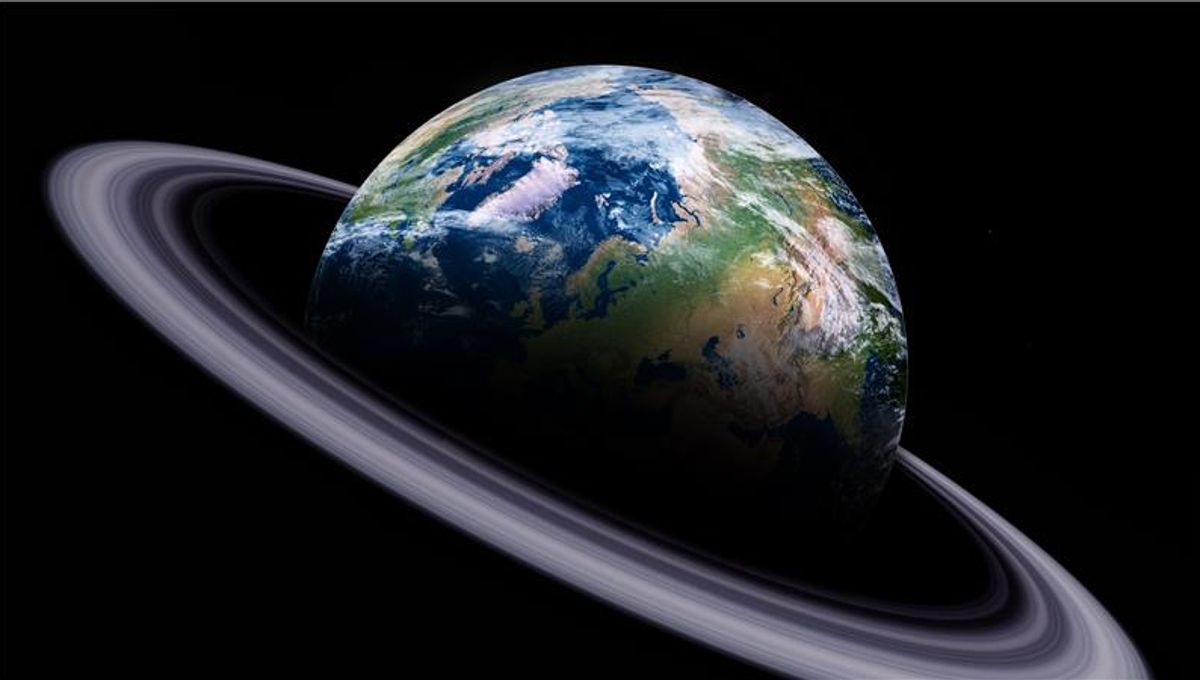Earth may have narrowly avoided a collision with a large asteroid 466 million years ago. The asteroid was possibly over 12 kilometers in diameter, passed close enough to Earth for its gravitational pull to tear the asteroid apart, forming a ring of debris around the planet. This event was known as the Ordovician impact spike.

Also Read: Asteroid 2024 PT5: Earth to Capture a New Mini-Moon for 2 Months
Tomkins and his team identified 21 crater sites globally, all created by meteorite impacts during this specific period. What stands out is that these craters were located close to Earth’s equator, which is unusual for random impacts.
Impact sites would be scattered more broadly across various latitudes. The researchers calculated that the likelihood of these craters being randomly placed near the equator was only 1 in 25 million. This supports the idea of a more structured origin such as a ring of debris.
When a smaller celestial body like an asteroid, approaches a larger one, it can be torn apart by the larger body’s gravity if it comes within a certain distance known as the Roche limit.
For Earth, this limit is around 3000 kilometers for solid asteroids and up to 15,800 kilometers for loosely compacted rubble.
The asteroid that passed by Earth would have come within this distance, breaking apart and forming a debris ring. Over time, the fragments from this ring may have slowly fallen to Earth.
The formation of a debris ring around Earth may have caused a climate shift. The theory suggests that this ring could have blocked sunlight, cooling the planet and leading to one of the coldest periods in the last 500 million years.
This period was known as the Hirnantian Ice Age, which began around 445 million years ago, just after the asteroid breakup.
The exact nature of this cooling effect remains unclear. Scientists are now working to model how much sunlight the debris ring might have blocked and how long it could have persisted to induce such temperature changes.
Other geological evidence supports the idea of a debris ring. Layers of limestone deposits from the Ordovician period, once located near the equator contain an unusual amount of meteorite debris.
The debris from the asteroid ring would have caused impact craters and also may have triggered other events. These include tsunamis and shifts in sedimentation patterns that researchers have linked to the spike in meteorite impacts.
The shading effect of the ring could have played a role in reducing sunlight and cooling the Earth’s atmosphere.
The Ordovician impact spike refers to a period approximately 466 million years ago characterized by an meteorite bombardment on Earth. While it’s well-documented in geological records, the reasons behind the concentration of meteorite impacts during this time remained a mystery until now.
Also Read: Iran’s Deployment of Chamran-1 Satellite Sparks Western Concerns
Layers of sedimentary rock from this period contain abnormal quantities of meteorite debris.
Using tectonic reconstructions, the researchers found that 21 impact craters from this time are concentrated within 30 degrees of the equator. This anomaly puzzled scientists, as asteroids typically strike Earth at random locations.
The research suggests that a large asteroid passed within Earth’s Roche limit, the point where tidal forces from the planet’s gravity become strong enough to tear a celestial body apart.
Over millions of years, debris from this ring would have slowly fallen to Earth leading to the concentrated meteorite impacts observed near the equator during the Ordovician period.
The researchers used plate tectonic models to reconstruct the locations of Earth’s landmasses during the Ordovician period. The findings showed that although only 30% of the planet’s continental crust was close to the equator, all 21 craters were found in this region.
The team employed a Geographic Information System to identify stable, undisturbed cratons ancient parts of Earth’s crust that had a high probability of preserving craters.
Regions like Western Australia, Africa and parts of North America and Europe were well-suited for this purpose.
The likelihood of all these craters being located near the equator purely by chance is extremely low. The researchers likened it to flipping a three-sided coin 21 times and landing on the same side every time, which raises suspicion of a non-random cause such as a debris ring focusing impacts along the equator.
One of the aspects of the research is the possibility that Earth’s ring system could have cast a shadow over parts of the planet affecting global temperatures. This hypothesis ties into the Hirnantian Icehouse.
During this time, Earth experienced one of the coldest periods in the last 500 million years. The researchers speculate that the ring system might have contributed to this cooling by blocking some sunlight, much like the rings of Saturn shade certain parts of the gas giant.
Also Read: Discovery of Hidden Edge State Could Lead to Practically Infinite Energy
























